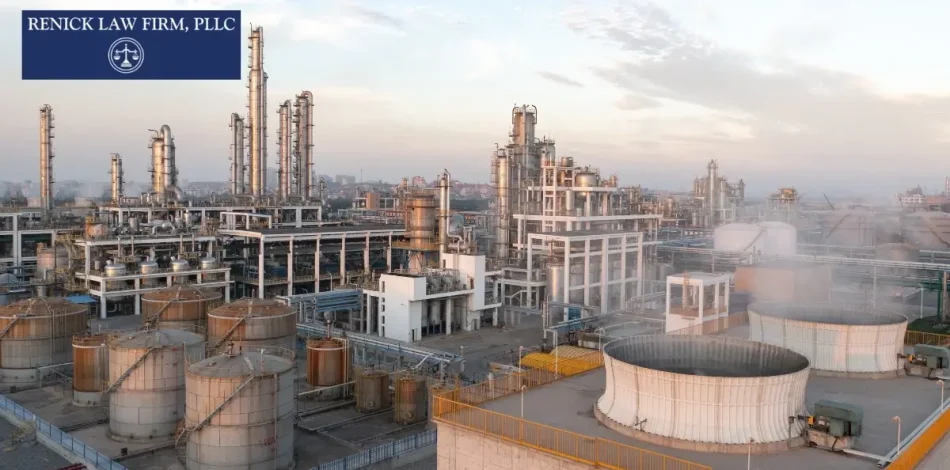|
|
Last Modified on Nov 16, 2024
Texas’s industrial success comes with significant risks. Plant explosions continue to endanger workers and surrounding communities. These incidents not only result in devastating loss of life and property but also raise critical questions about safety standards and accountability. Understanding the circumstances behind these tragedies is essential for addressing the root causes and implementing preventive measures.
Texas plant explosion statistics reveal that the Lone Star State accounts for a disproportionate share of chemical plant explosions nationwide. By analyzing the data and referencing real-world examples, we can better understand the scale of this issue and the steps needed to prevent future catastrophes.
The Alarming Frequency of Plant Explosions in Texas
Texas consistently leads the nation in chemical plant accidents based on the number of incidents reported annually. In 2023, the state recorded more than 25 chemical explosions and fires in the first half of the year. Many of those explosions resulted in serious injuries and environmental damage. The figure represents 30% of plant-related accidents nationwide.
These numbers reflect the density of industrial facilities and the sheer scale of operations. For example, the Houston area alone is home to many major chemical plants, making it one of the largest industrial hubs in the world. It accounts for over 44 percent of the nation’s overall petrochemical manufacturing. While these facilities are a boon for the local economy, their presence increases the likelihood of accidents in those communities.
Enhanced regulatory oversight, consistent inspections, and stricter compliance measures are necessary to address these risks effectively. Prioritizing worker safety and environmental protection through proactive efforts could significantly reduce the number of incidents and their impact on Texas communities.
Understanding the Causes Behind the Explosions
Chemical plant explosions are typically the result of preventable issues. A report by the U.S. Chemical Safety and Hazard Investigation Board revealed that many industrial accidents in the past decade were linked to equipment failure or human errors. These issues can arise due to aging infrastructure, insufficient maintenance, or inadequate safety training.
Texas’ vulnerability to extreme weather exacerbates these risks. Hurricanes, flooding, and high winds have caused catastrophic incidents, such as the 2019 explosion at the TPC Group plant in Port Neches that displaced 50,000 residents and released 11 million pounds of hazardous chemicals into the environment.
The Human and Environmental Toll of Explosions
The human cost of chemical plant explosions is staggering. In the past decades, hundreds of injuries and dozens of fatalities have resulted from plant explosions. The 2013 West Fertilizer Company explosion killed 14 people and injured over 200 others. The total damage caused by the explosion is estimated to be over $100 million.
The environmental impacts are equally concerning. Explosions often release toxic chemicals into the air, water, and soil. The 2023 Shell USA facility fire in Deer Park, Texas, emitted harmful pollutants that impacted local ecosystems and public health. Reports estimate that these incidents collectively release millions of pounds of hazardous substances annually.
Regulatory Oversight and Its Limitations
Federal and state agencies, such as the Occupational Safety and Health Administration, play a critical role in maintaining workplace safety. The sheer scale of Texas’ industrial sector creates significant challenges in enforcement. Texas has experienced notable safety violations in recent years. Over the past three years, five companies were cited with a combined $2.8 million in penalties by OSHA.
FAQs:
How Does an Explosion Occur?
An explosion occurs when energy is released suddenly, leading to rapid gas expansion and shock waves. This process can stem from chemical reactions, pressure buildup, or nuclear activity. The energy release generates heat, sound, and force, often causing significant destruction. Explosions may be accidental, such as from gas leaks, or deliberate, as seen in industrial demolition or other controlled applications.
What Are the Three Types of Explosions?
Explosions are categorized as chemical, physical, or nuclear. Chemical explosions result from rapid combustion or reactions, such as fuel igniting. Physical explosions occur due to sudden pressure changes, like a gas tank rupture. Nuclear explosions involve energy released by splitting or fusing atomic nuclei, causing immense heat and destruction. Each type has distinct causes, mechanisms, and effects, often resulting in significant damage and posing unique challenges for prevention and response.
How Can We Prevent Explosions?
Preventing explosions involves minimizing risks through proper safety measures. This includes controlling ignition sources, ensuring proper ventilation, and safely handling flammable materials. Regular inspections, training, and using explosion-proof equipment are critical in high-risk environments. Following industry safety standards and maintaining awareness of potential hazards helps reduce the likelihood of explosive incidents.
What Are the Key Factors That Trigger Explosions?
Explosions are typically triggered by a combination of fuel, oxygen, and an ignition source, collectively known as the “fire triangle.” Factors like improper storage of flammable substances, equipment malfunctions, and environmental conditions, such as high temperatures or pressure, can increase the likelihood of an explosion. In industrial settings, lapses in safety protocols or inadequate monitoring of hazardous materials often contribute to these dangerous incidents.
What Is the Difference Between Detonation and Explosion?
Detonation is a specific type of explosion where a shock wave travels faster than sound, causing a rapid energy release. In contrast, explosions include any sudden energy release, such as slower deflagrations. Detonations are more destructive due to their supersonic speed and energy concentration, while other explosions may occur at subsonic speeds with less intense effects, causing less widespread damage in most scenarios.
Take the First Toward Securing Compensation by Contacting Renick Law Firm, PLLC Today
Plant explosions can upend lives by causing bodily damage to nearby workers and long-lasting environmental damage. Anyone who was harmed or had their property damaged due to a plant explosion has the right to hire an attorney to seek compensation for medical expenses, property damage, and other losses caused by the plant owners.
The legal team at Renick Law Firm, PLLC, stands ready to defend your rights and further your interests through direct negotiations with the plant owners or actions through the courts. Take the first step by contacting our office today so we can review your case before aggressively pursuing compensation for you and your family.




